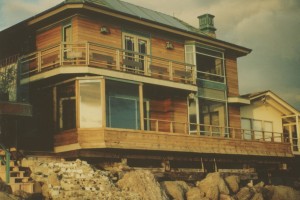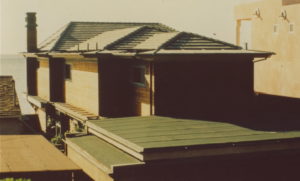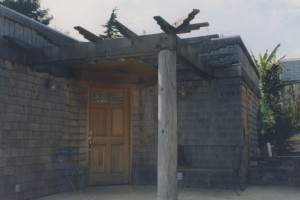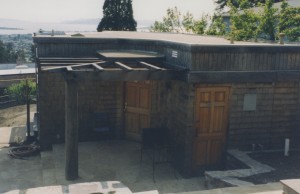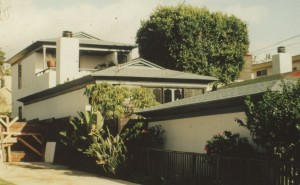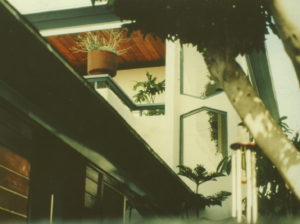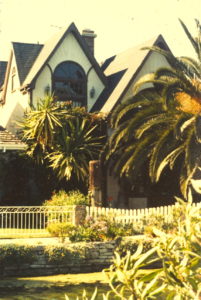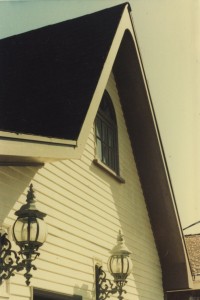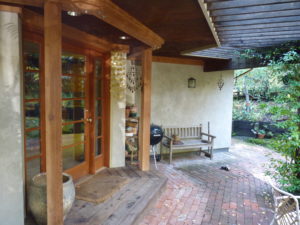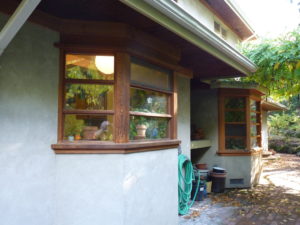
About Taurus
You are here : Home > About Taurus
TAURUS DESIGNERS AND BUILDERS is a sole-proprietorship Design/Build company specializing in Residential construction — principally on single family houses. As the designer and primary tradesperson of this undertaking, I have immersed myself in the practice of home building as passionately and completely as I was able. I’m proud of the work I’ve done and look back on it with wonder – wonder that I actually accomplished it and wonder that anyone had enough confidence to hire me in the first place and put their money and their sanity on the line to see their projects through to completion. I am immensely grateful for having had these opportunities.
The first project I finished was a remodel of my bedroom in 1964 at my parents home. In high school I was a part-time draftsman for Hiawatha Estes drawing sets of mail-order blueprints for customers around the country, and summers I worked on a survey crew for the City of Los Angeles and as a meter reader for the Department of Water and Power. I studied Environmental Design at UC Davis for two years, Architecture at UC Berkeley for a year, and Structural Engineering and Design at UCLA for five years. As an undergraduate I was a Departmental Scholar and as a graduate student I was recognized in 1976 as the top Teaching Assistant in the UCLA School of Engineering and was President of the ASCE student chapter for two years. During this same period I also joined the Carpenter’s Union (UBCJA) as an apprentice and completed all eight levels of study to become a journeyman carpenter. From 1971 through 1976 I was mentored by Frank Angelillo in the art and craft of home building, and over that span of time mastered the trades of foundation construction and structural framing. In 1977, at the end of my apprenticeship, I obtained my General Contractor’s License (B-342194), graduated from UCLA Summa Cum Laude, and started designing and building homes in Malibu, Venice Beach, Santa Monica and other nearby areas. I have been at it continuously ever since; fifteen more years in Southern California and the last twenty-five years in the Bay Area of Northern California.
From the start more than 50 years ago I have believed in the importance of ‘hands on’ experience when it comes to designing. Frank taught that the heart of the job is on-site, in the ditches, and that ‘understanding the dirt’ was how good design should begin. It is on the ground that every house sits and it is from the ground that all building materials emerge — likewise, it is into the ground that everything shall one day return. The inter-relationships between these materials as well as the environmental forces which influence them have existed for thousands of years so it is reasonable that good design should begin here. This ‘hands on’ approach leads naturally to structures which are low-maintenance, strong and long-lasting, environmentally efficient and which can be made beautiful by utilizing the incredible palette of shapes, colors and textures occurring everywhere around us. It leads to harmony. Houses are for living in and the structures and machinery and finishes we create should enhance our lives as much as possible. Homes should work well and feel good.
My goal when I begin a new job is to create the greatest possible improvement taking into account the limitations of the site and existing conditions, the budget constraints, and the needs and desires of the owners. Every project is unique. The process of creating or renovating a home is often uncertain, inevitably messy, constantly evolving, and open to suggestion until the day of completion and then there can be regrets, call-backs, on-going maintenance issues, and often years of continuing financial obligations. But the positive aspects are usually far more significant, and in my 40-plus years of contracting I am not aware of a single client who would trade what they built for what they had to begin with, even if they could get their money back. Establishing a rapport with clients is what makes the whole process possible and mutual trust is essential for a beneficial outcome. I believe in fair trade and the equality of both parties when working out the terms of any contractual arrangement. In most cases the best results come from a ‘Time Plus Materials’ type of contract, especially when a project includes the renovation of an existing occupied home, but sometimes ‘Fixed Bid’ contracts are appropriate.
Over the years I have come to appreciate the importance of collaboration among the various trades and professions necessary to assemble the parts of any home. Even the smallest jobs usually require the services of several people and materials from several vendors, and larger projects can involve dozens of subcontractors and multiple public agencies. Planning any job includes organizing the work into discrete tasks and putting the right people in the right place at the right time. Before every job begins, a Budget and a Master Schedule is created showing all the elements of the work to be done, allotted costs for each item, and a comprehensive timeline indicating when work begins and ends for each item. As work is completed the Schedule is updated to monitor progress, manage cash flow, and aid in further planning. My experience is that this level of preparation eliminates confusion for everyone involved and exposes differences in expectations in time to work things out before actually building … I really dislike making something and then taking it apart. Assuring that everyone’s expectations match as closely as possible is the fundamental secret to success.
The PORTFOLIO Pages of this website include photos and drawings of past ‘Projects’ showing the work from several different points of view. The PORTFOLIO also includes a look at some of the work from a technological angle, and singles out particular pieces which are best seen as works of art. “HomeBuilder” is a collection of writing and images intended as a “How To” book for beginners in the field.
